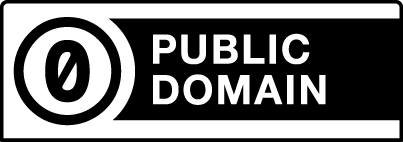Metal Pokemon Card M1 Ultra

Information
Turn any Pokémon card into a file that is easy to laser.
Instruction
Step1: Prepping Image in Canva
I personally use Canva Pro for prepping image files. Adobe has a similar feature that can achieve the same goal.
Create a new file. I typically measure the blank. Press custom size and set the dimensions to match the blank. This helps to minimize the amount of resizing you'll have to do later on in the Xtool software.
I'm using a 0.02 mm thick anodized aluminum card blank that I had bought on Temu. I was originally hoping I could cut through them when I first bought the laser. The M1 Ultra does not cut through Metal.
Upload a clear image of a Pokémon card. Unfortunately, the cards on the Pokémon website are pretty fuzzy when they're resized. I was able to right click and copy images from some collectors website. Paste image in the blank Canva page.
Scroll down on the left tool bar till you get to Apps. Search Sketchify. This app lets you convert any image into a detailed sketch. It lets you do a few for free each day. It's subscription is $5 a month.
Background remove the image. Double check if the image edges look okay.
Press edit image. Press on Adjust. It's located above Magic Studio. Play with the settings. I've attached an image above to give an idea of what that looks like. The goal is to get the letters to pop as much as possible without a grey background. Each image will be a little different to achieve that goal. We're doing this to save time with the image clean up later.
Download the image. I typically download it as a PNG with a transparent background.
Step2: Making a Jig
This cards could blow away from just the air assist. They are thin. A jig will save a lot of frustration.
My Husband 3d printed a jig out of PETG. I would not recommend clear. I'm going to walk you through how to easily make one using wood If you don't have a 3d printer.
I added a sample in the XCS file, but there's not guarantee your card is the same size.
Take an standard piece of paper. Use scotch tape to tape a card on each corner. Line it the edge as straight as possible. It'll be better if you cut the paper down to a square, so you don't use as much wood. It's not necessary though. Place the paper in the machine. Use the gantry light to make sure it's straight. Mark each corner of the cards. Be as precise as possible.
You'll end up with rectangles on your software screen from marking the material. Use the basic shapes in the software to outline rectangles. Click on the unlink in the top left corner by the width/height dimensions. Make it the tiniest bit bigger than your marking area.
Click on the coffee handle shape. Click edit on the top tool bar. It lets you edit the vector. Click on the nodes on the inner circle. Press delete on the keyboard. You'll end up with a half circle. Line that up to the rectangles. Now you have an easy way to get the card out of the jig.
Run a cut out on your choice of wood. If you're using an M1 Ultra, then you need to lower the focus to be able to cut through the wood.
Glue the cut out on a backer sheet.
Step3
These setting are based on the M1 Ultra 10 watt. I just used the recommended setting from the Xtool materials library for an anodized aluminum card. You'll be able to pull custom settings for your machine using this method.
I found that Atkinson was the best bit map mode without having to waste a lot of time on background clean up. Max out the lines per cm to 300.
The Pokémon card back looks different because it was from a coloring sheet.
Step4: Add some weight to the card
These cards are so thin that I was worried people would cut their hands.
I glued 4 cards together. I used the uncoated ones as a filler.
I used UHU glue from Michael's craft store.
Spread it with a qtip. It only takes about 3 small drops. It's pretty runny.
DO NOT SQUEAZE THE CONTAINER BEFORE OPENNING THE GLUE. It will gush out…
I was able to wipe the mistakes with alcohol, but you have to be quick. Try to keep your gloves clean to prevent getting it all over the card.
